Dr. Adnan Akay, Provost, Bilkent University, Ankara, Turkey
[
Handout]
Increasingly companies look for external advice and viewpoints from a diverse set of experts who may have different degrees of familiarity with the company, but are experts in areas important to the company. There are different reasons for setting up such boards and, accordingly, they have different structures. Some boards are very involved and meet frequently, others receive information and provide high-level feedback. The key points for a successful board, not surprisingly, rest on its membership, but also how the interactions take place and the recipients of the advices. This presentation will describe how to start up a technology advisory board and means by which to receive the best input from such boards, with anonymous examples.
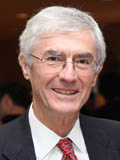 Adnan Akay is the Provost of Bilkent University where started on January 1, 2009 as Vice President and the founding chair of the new Mechanical Engineering Department. Previously, Dr. Akay served at the U.S. National Science Foundation as the Director of Civil, Mechanical and Manufacturing Innovation Division. Prior to serving at NSF, Dr. Akay was a professor and the head of Mechanical Engineering Department at Carnegie Mellon University where he was awarded the endowed Lord Chair in Engineering. From 1978 to 1992, he was on the faculty at Wayne State University where he held the DeVlieg Chair in Engineering. Between 1976 and 1978 he was a visiting staff fellow at the National Institute of Environmental Health. He has held visiting appointments at MIT, the University of Rome "La Sapienza", and at Institut National des Sciences Appliqués de Lyon in France. Professor Akay is a fellow of the American Society of Mechanical Engineers and the Acoustical Society of America, and a member of several honor societies. Dr. Akay serves on advisory boards of several universities and regularly consults with international industries as a technical advisor.
Adnan Akay is the Provost of Bilkent University where started on January 1, 2009 as Vice President and the founding chair of the new Mechanical Engineering Department. Previously, Dr. Akay served at the U.S. National Science Foundation as the Director of Civil, Mechanical and Manufacturing Innovation Division. Prior to serving at NSF, Dr. Akay was a professor and the head of Mechanical Engineering Department at Carnegie Mellon University where he was awarded the endowed Lord Chair in Engineering. From 1978 to 1992, he was on the faculty at Wayne State University where he held the DeVlieg Chair in Engineering. Between 1976 and 1978 he was a visiting staff fellow at the National Institute of Environmental Health. He has held visiting appointments at MIT, the University of Rome "La Sapienza", and at Institut National des Sciences Appliqués de Lyon in France. Professor Akay is a fellow of the American Society of Mechanical Engineers and the Acoustical Society of America, and a member of several honor societies. Dr. Akay serves on advisory boards of several universities and regularly consults with international industries as a technical advisor.
Dr. Bulent Atalay, University of Mary Washington and the University of Virginia; Member, Institute for Advanced Study, Princeton, USA
[
Handout]
What happens when the objective (scientific) part of the mind intersects with the subjective (artistic) part? Professor Atalay explores this fascinating question by probing the genius of Leonardo da Vinci, Shakespeare, Newton, Beethoven, and Einstein. Leonardo, the creator of the two most famous works in history, was a scientist doing art, and an artist doing science. Newton and Einstein were towering scientific figure. But Newton spent much of his time experimenting in a pair of distinctly non-scientific area — in the mysterious precincts of alchemy and in scrutinizing the details of Biblical scripture. Einstein, the greatest scientist since Isaac Newton, was a gifted violinist who frequently found inspiration for his scientific endeavors while playing, especially the music of Mozart. And Beethoven was a pianist and composer, a pure musician, or so it seems. Finally, Shakespeare is without a peer in the history of literature.
Atalay shows how they were able to weave their disparate passions often with extraordinary results. Was this an anomaly or something that can be mapped onto the brain? Understanding the patterns of their creativity will provide an entirely new appreciation of their work and genius—and perhaps that of others, too.
Dr. Atalay will sign his book for PICMET guests at a book signing ceremony immediately following his keynote speech
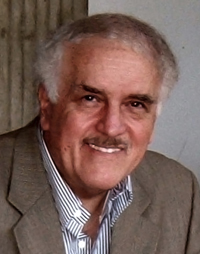 Described by NPR, the Washington Post, and the National Geographic Society as a 21st Century Renaissance Man, Bulent Atalay is a scientists, artist and author. In theoretical physics his undergraduate, graduate and post-doctoral training took place at Georgetown, CAL-Berkeley, Princeton, Oxford and the Institute for Advanced Study. The author of numerous papers in theoretical physics and two best-selling books about Leonardo da Vinci: Math and the Mona Lisa and Leonardo’s Universe, he is currently working on a new book about the similarities and differences in the traits, and the modus operandi of Leonardo, Shakespeare, Newton, Beethoven and Einstein. His author website appears at www.bulentatalay.com
Described by NPR, the Washington Post, and the National Geographic Society as a 21st Century Renaissance Man, Bulent Atalay is a scientists, artist and author. In theoretical physics his undergraduate, graduate and post-doctoral training took place at Georgetown, CAL-Berkeley, Princeton, Oxford and the Institute for Advanced Study. The author of numerous papers in theoretical physics and two best-selling books about Leonardo da Vinci: Math and the Mona Lisa and Leonardo’s Universe, he is currently working on a new book about the similarities and differences in the traits, and the modus operandi of Leonardo, Shakespeare, Newton, Beethoven and Einstein. His author website appears at www.bulentatalay.com
Dr. Hans-Joerg Bullinger, Senator of the Fraunhofer-Gesellschaft, Germany
[
Handout]
The world is becoming increasingly complex. Globalization and sustainability, flexibility and decentralization, diversity and new lifestyles bring markets and systems to their limits. The way how we have so far organized the advance of knowledge as well as the research and innovation system have to adapt those challenges. Yet the driving force of any innovation is the interplay between "technology push" and "market pull" and both mechanisms have to face challenges which are based on the fact, that any information in a knowledge society will be easily available and exchangeable. Therefor technology- & innovation management have to change in a way that they empower and integrate more and more stakeholder in the development of new technologies and innovations. How to handle this change will be one of the biggest challenges in the years to come. The keynote will give insights about Fraunhofer is facing this challenge with innovative ideas, processes and some first examples.
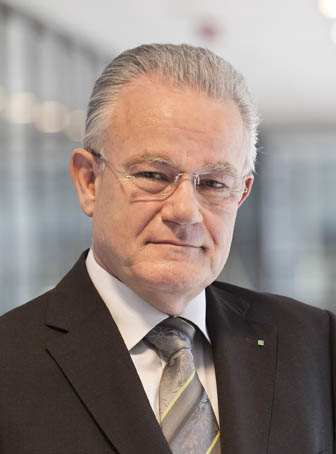 Dr. Hans-Joerg Bullinger was born in Stuttgart. He began his career working as a manufacturer
for the Daimler-Benz company in Stuttgart, after which he obtained a degree at the University of
Stuttgart, graduating with a Master's degree and Ph.D. in Manufacturing. After two years of
lecturing at the University of Hagen, Dr. Bullinger was asked to become a full-time lecturer at
the University of Stuttgart. Besides his role as chairman of the University, Dr. Bullinger was also
the head of the Institute for Human Factors and Technology Management (IAT) and the
Fraunhofer-Institute for Industrial Engineering (IAO). From October 2002 until October 2012 he
was President of the Fraunhofer-Gesellschaft, Corporate Management and Research and
alternates afterwards to the Senate of Fraunhofer.
Dr. Hans-Joerg Bullinger was born in Stuttgart. He began his career working as a manufacturer
for the Daimler-Benz company in Stuttgart, after which he obtained a degree at the University of
Stuttgart, graduating with a Master's degree and Ph.D. in Manufacturing. After two years of
lecturing at the University of Hagen, Dr. Bullinger was asked to become a full-time lecturer at
the University of Stuttgart. Besides his role as chairman of the University, Dr. Bullinger was also
the head of the Institute for Human Factors and Technology Management (IAT) and the
Fraunhofer-Institute for Industrial Engineering (IAO). From October 2002 until October 2012 he
was President of the Fraunhofer-Gesellschaft, Corporate Management and Research and
alternates afterwards to the Senate of Fraunhofer.
Dr. Bullinger received several honorary doctorates and awards like »Knight Commander´s Cross
of the Order of Merit of the Federal Republic of Germany« from the Federal President of
Germany, was awarded »Manager of the Year« by the German manager magazine in 2009 and
honoured with the »Grashof Denkmünze« by VDI (The Association of German Engineers) in
2011. Dr. Bullinger received the »Leonardo - European Corporate Learning Award« 2012.
Dr. Bullinger is a member of several councils like the Industry-Science Research Alliance of the
Federal Ministry of Education and Research and the European Research and Innovation Area
Board (ERIAB) of the European Commission. Dr. Bullinger is a Fellow of UK´s Royal Academy of
Engineering.
At present, the Fraunhofer-Gesellschaft maintains more than 80 research units in Germany,
including 67 institutes and research units. The majority of the 23,000 staff are qualified scientist
and engineers. With its clearly defined mission of application-oriented research and its focus on
key technologies of relevance to the future, the Fraunhofer-Gesellschaft plays a prominent role
in the German and European innovation process.
Mr. Shinjiro Iwata, Advisor to Hitachi Ltd. Japan
[
Hanbdout]
The advent of the Internet of Things (IoT) is changing the way we live and do business, forming new connections and relationships between people, systems and things.
In order to receive the maximum benefit of IoT, it is essential that we perform "Open Innovation", that is, perform innovative creation that goes well beyond the scope of what is possible within single company or single industry.
Hitachi Group is a pioneer in open innovation, long active in collaborative creation ventures with a wide range of partners.
Through our collaborative creation, we aim to bring about both economic value and social benefits, while working to realize a safe, comfortable and sustainable society and a better future for our children.
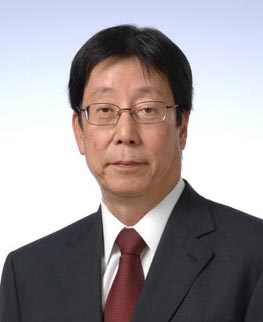 Mr. Shinjiro Iwata Advisor to Hitachi Ltd. He retired in April after serving as the Representative Executive Officer, Executive Vice President, Executive Officer, and Chief Transformation Officer.
Mr. Shinjiro Iwata Advisor to Hitachi Ltd. He retired in April after serving as the Representative Executive Officer, Executive Vice President, Executive Officer, and Chief Transformation Officer.
Mr. Iwata began his career with Hitachi Ltd. in 1972, when he joined the Overseas Business Department. Working his way up through various positions, in 1996 he became manager of Business Planning Department for the Information Systems Group.
He joined Hitachi Data Systems (HDS) in 1997 as Executive Vice President. After improving the performance of HDS, he became CEO of the company in 2001.
In 2006 he became CMO of the newly established Hitachi Global Storage Technologies, where he oversaw everything from manufacturing to front-line sales. Later acting as EVP, he implemented sweeping management reforms, putting HGST’s business firmly back on track.
In 2009, he returned to Hitachi Ltd. as Vice President and Executive Officer, CEO of Service & Global Business, Information & Telecommunication Systems. In the following years, Mr. Iwata strengthened the overseas divisions of ICT, later becoming Senior Vice President, and further contributing to the expansion of business.
In 2013 he became Representative Executive Officer, and worked on management reform of the entire Hitachi Group. Mr. Iwata’s firmly believes in nimble management making use of data, and efficient waste-free management.
In order to implement this policy, Mr. Iwata also acted as CIO for integration of Hitachi’s internal ICT systems and a leader of the End-to-End Supply Chain Project. Most recently, Mr. Iwata served as Director of the Hitachi Smart Transformation Project Initiatives Division, which is reforming the structures of the entire Hitachi Group.
Since 2012, he has also been a visiting professor at Tsukuba University.
Dr. Jay Lee, Ohio Eminent Scholar, L.W. Scott Alter Chair, and Distinguished Univ. Professor Univ. of Cincinnati, USA
[
Handout]
In today’s competitive business environment, companies are facing challenges in dealing with big data issues for rapid decision making for improved productivity. Many manufacturing systems are not ready to manage big data due to the lack of smart analytics tools. U.S. has been driving the Cyber Physical Systems (CPS), Industrial Internet, and Advanced Manufacturing Partnership (AMP) Program to advance future manufacturing. Germany is leading a transformation toward 4th Generation Industrial Revolution (Industry 4.0) based on Cyber-Physical Production System (CPPS). China has just launched 2025 Plan and Internet Plus to focus on strengthening manufacturing and accelerate service innovation. It is clear that as more predictive analytics software and embedded IoT are integrated in industrial products and systems, predictive technologies can further intertwine intelligent algorithms with electronics and tether-free intelligence to predict product performance degradation and autonomously manage and optimize product service needs,
The presentation will address the trends of predictive big data analytics and industrial 4.0 as well as the readiness of smart predictive tools to manage industrial big data to achieve productivity and resilient product life cycle management with improved service value. First, industrial competitiveness between U.S., Germany, China, and Japan are examined. Second, Cyber- Physical System (CPS) enabled product manufacturing and services will be introduced. Third, advanced predictive analytics technologies for smart maintenance and manufacturing systems with case studies will be presented. Finally, Dominant Innovation® for smart service design will be introduced with case studies.
 Dr. Jay Lee is Ohio Eminent Scholar, L.W. Scott Alter Chair Professor, and Distinguished Univ. Professor at the Univ. of Cincinnati and is Founding Director of National Science Foundation (NSF) Industry/University Cooperative Research Center (I/UCRC) on Intelligent Maintenance Systems (IMS www.imscenter.net) which is a multi-campus NSF Industry/University Cooperative Research Center which consists of the Univ. of Cincinnati (lead institution), the Univ. of Michigan, Missouri Univ. of S&T, and Univ. of Texas-Austin. The Center has developed partnerships with over 85 companies from 15 countries since its inception in 2001. In addition, he has mentored his students and developed a spin-off company Predictronics with support from NSF Innovation ICorps Award in 2012. He also serves as an invited committee member for White House Cyber Physical Systems (CPS) Advisory Group in 2013.
Dr. Jay Lee is Ohio Eminent Scholar, L.W. Scott Alter Chair Professor, and Distinguished Univ. Professor at the Univ. of Cincinnati and is Founding Director of National Science Foundation (NSF) Industry/University Cooperative Research Center (I/UCRC) on Intelligent Maintenance Systems (IMS www.imscenter.net) which is a multi-campus NSF Industry/University Cooperative Research Center which consists of the Univ. of Cincinnati (lead institution), the Univ. of Michigan, Missouri Univ. of S&T, and Univ. of Texas-Austin. The Center has developed partnerships with over 85 companies from 15 countries since its inception in 2001. In addition, he has mentored his students and developed a spin-off company Predictronics with support from NSF Innovation ICorps Award in 2012. He also serves as an invited committee member for White House Cyber Physical Systems (CPS) Advisory Group in 2013.
His current research focuses on Industrial Big Data Analytics, Cyber-Physical Systems, as well as Prognostics and Health Management (PHM). He led IMS Team and developed the well-known Watchdog Agent® (s systematic platform for data analytics toolbox used by over 80 global companies) as well as the Dominant InnovationTM (a methodology for product and service innovation design and has been used by many Fortune 500 companies).
Currently, he also serves as advisor to a number of global organizations, including a member of the Manufacturing Executive Leadership Council, member of International S&T Committee of Alstom Transport, France, Scientific Advisory Board of Flanders' MECHATRONICS Technology Centre (FMTC) in Leuven, Belgium, Scientific Advisor Board of SIMTech, Singapore, Member of Advisory Committee of MIRDC Taiwan, etc. In addition, he serves as editors and associate editor for a number of journals including IEEE Transaction on Industrial Informatics, Int. Journal on Prognostics & Health Management (IJPHM), etc, In addition, he is also a De Tao Master in Innovation (http://www.detaoma.com/Jay_Lee/).
Previously, he served as Director for Product Development and Manufacturing at United Technologies Research Center (UTRC), E. Hartford, CT as well as Program Directors for a number of programs at NSF during 1991-1998, including the Engineering Research Centers (ERCs) Program, the Industry/University Cooperative Research Centers (I/UCRCs) Program, and the Materials Processing and Manufacturing Program. He also served as advisor to a number of universities including Cambridge Univ., Johns Hopkins Univ. etc.
He is a Fellow of ASME, SME, as well as a founding fellow of International Society of Engineering Asset Management (ISEAM). He is a frequently invited speaker and has delivered over 200 invited keynote speeches at major international conferences and has over 20 patents and 2 trademarks. He received a number of awards including the most recent NSF Alex Schwarzkopf Technological Innovation Prize in Jan. 2014, MFPT (Machinery Failure Prevention Technology Society) Jack Frarey Award in 2014, and the Prognostics Innovation Award from National Instruments in 2012. He mentored his students to participate in PHM Data Challenge Competition and won the 1st Prize 5 times since 2008. He is also a honorary advisor to the Heifer, International-a charity organization working to end hunger and poverty around the world by providing livestock and training to struggling community.
Dr. Alan L Porter, Professor Emeritus, Georgia Institute of Technology - USA
[
Handout]
PICMET’s primary mission is to advance analyses of changing technologies to inform technology management. That reflects balancing expert and empirical components to provide effective intelligence. Are managers ready for that? Doubts remain.
I’d like to share an example of our group’s efforts to “Forecast Innovation Pathways” (FIP) for the case of “Big Data.” In tackling such a challenge, we strive to understand the target technology and its attendant “Technology Delivery System” (i.e., contextual factors affecting development of novel applications). We then perform “tech mining” – text analyses of research publication, patent, and contextual abstract records on the topic, retrieved from databases. One aspect of special interest is detecting “emergence.”
Our process engages various experts and stakeholders to interpret the story of technology development to date. We then work to anticipate promising paths to diverse applications, and attendant issues, potential impacts, and policy/management leverage points.
“Big Data” offers an intriguing case. The explosive growth in R&D, business, and diverse popular interests, concurrently, fuels generation of challenging scenarios for technology managers.
 Alan Porter is Professor Emeritus of Industrial & Systems Engineering, and of Public Policy, at
Georgia Tech, where he is Co-director of the Technology Policy and Assessment Center. He is
also Director of R&D for Search Technology, Inc., Norcross, GA (producers of VantagePoint and
Thomson Data Analyzer software). He is author or co-author of some 230 articles and books,
including Tech Mining (Wiley, 2005) and Forecasting and Management of Technology (Wiley,
2011). Current research emphasizes “forecasting innovation pathways” for newly emerging
technologies. This entails text mining of science, technology & innovation information resources to
generate Competitive Technical Intelligence. Many publications are available at:
http://www.researchgate.net/profile/Alan_Porter4.
Alan Porter is Professor Emeritus of Industrial & Systems Engineering, and of Public Policy, at
Georgia Tech, where he is Co-director of the Technology Policy and Assessment Center. He is
also Director of R&D for Search Technology, Inc., Norcross, GA (producers of VantagePoint and
Thomson Data Analyzer software). He is author or co-author of some 230 articles and books,
including Tech Mining (Wiley, 2005) and Forecasting and Management of Technology (Wiley,
2011). Current research emphasizes “forecasting innovation pathways” for newly emerging
technologies. This entails text mining of science, technology & innovation information resources to
generate Competitive Technical Intelligence. Many publications are available at:
http://www.researchgate.net/profile/Alan_Porter4.
Dr. Nam P. Suh, Ralph E. & Eloise F. Cross Professor, Emeritus, Massachusetts Institute of Technology (MIT), USA
[
Handout]
For centuries, people have developed innovative solutions to satisfy human and societal needs in such fields as energy, electric power generation, food, transportation, healthcare, education, information technology, banking, defense, environment, communications, and materials. Many of these innovations are in the form of systems that are designed to satisfy a specific set of functional requirements (FRs) and constraints (C).
We should be able to design all these systems using the same methodology rather than a variety of ad hoc approaches, although the specific nature of the problem, physical principles, data, and acceptable variations are field specific.
This presentation addresses the two challenging issues involved in designing and commissioning large systems: cost over-runs and missing the original schedule. Experience with large system design reinforces the view that the coupling of FRs, i.e., coupled designs, is primarily responsible for cost over-runs and missed schedules. It also increases "complexity" of systems. A solution is presented to preventing the creation of a coupled design: System Architect, whose job is to monitor the design process to be certain that it does not inadvertently create functionally coupled designs. An example is provided.
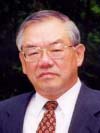 Dr. Nam Pyo Suh was the 13th and 14th President of the Korea Advanced Institute of Science and Technology (KAIST). He is also the Ralph E. & Eloise F. Cross Professor, Emeritus, M.I.T. During his tenure at KAIST (from July 2006 to March 2013), its worldwide reputation has increased from 198th to 63rd overall and to 24th in engineering and IT. He was the presidential appointee in charge of engineering at NSF. He received nine honorary doctoral degrees. He is the recipient of the 2009 ASME Medal, the 2006 General Pierre Nicolau Award, the National Science Foundation’s Distinguished Service Award, and many other distinguished awards. He is the author of over 300 papers and seven books, and holds more than 70 patents, including those related to the on-line electric vehicle (OLEV) and the Mobile Harbor (MH). He is a member of the Board of Trustees of King Abdullah University of Science and Technology (KAUST) and a member of the International Advisory Board of the King Fahd University of Petroleum and Minerals (KFUPM), and the Khalifa University of Science, Technology and Research (KUSTAR). He is a member of the Board of Directors of Axiomatic Design Software, Inc., OLEV Technology, Inc., and Parker Vision, Inc.
Dr. Nam Pyo Suh was the 13th and 14th President of the Korea Advanced Institute of Science and Technology (KAIST). He is also the Ralph E. & Eloise F. Cross Professor, Emeritus, M.I.T. During his tenure at KAIST (from July 2006 to March 2013), its worldwide reputation has increased from 198th to 63rd overall and to 24th in engineering and IT. He was the presidential appointee in charge of engineering at NSF. He received nine honorary doctoral degrees. He is the recipient of the 2009 ASME Medal, the 2006 General Pierre Nicolau Award, the National Science Foundation’s Distinguished Service Award, and many other distinguished awards. He is the author of over 300 papers and seven books, and holds more than 70 patents, including those related to the on-line electric vehicle (OLEV) and the Mobile Harbor (MH). He is a member of the Board of Trustees of King Abdullah University of Science and Technology (KAUST) and a member of the International Advisory Board of the King Fahd University of Petroleum and Minerals (KFUPM), and the Khalifa University of Science, Technology and Research (KUSTAR). He is a member of the Board of Directors of Axiomatic Design Software, Inc., OLEV Technology, Inc., and Parker Vision, Inc.
©2018 PICMET Inc. All rights reserved.